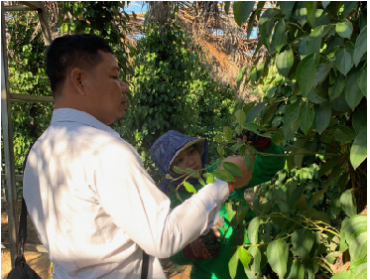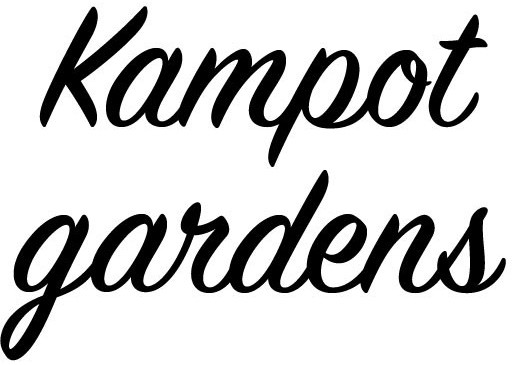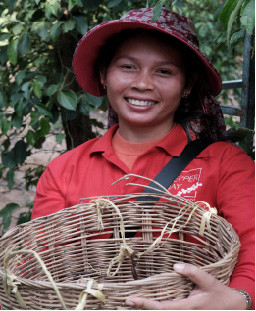
Harvest season in Kampot city
Harvest is a key moment for the Kampot city area!
Kampot Pepper is one of Cambodian products to benefit from the status of Protected
Geographical Indication. In year 2010, it gained recognition. The production areas of Kampot Pepper are restricted to six districts within Kampot and Kep provinces.
Definition of Geographical Indication: The use of geographical indication (GI) is may act as a certification that the product possesses certain qualities, is made according to traditional methods, or enjoys a certain reputation, due to its geographical origin.
Brief History:
Pepper in Cambodia has a centuries’ long history which precedes the great civilization of the kings of Angkor. The Chinese explorer Tchéou Ta Kouan describes pepper production in Cambodia as early as the 13th century.
In 1873-1874, war erupted in the Aceh province of Indonesia. Unable to contain the powerful Dutch army, the sultan of Aceh - not wanting to leave this wealth in the hands of his enemies - burned down his pepper plantation. Part of the production then moved to Cambodia, in the Kampot region.
Kampot province witnessed a real “pepper fever” with the arrival of the French colonists at the end of the 19th century. They intensified the production and produced up to 8,000 tons a year at the beginning of the next century.
In the middle of the 20th century, Kampot Pepper is at its pinnacle. Production which stabilized around 3,000 tons per year is of exceptional quality. Kampot Pepper is then the spice of choice for the top French restaurants.
From 1975 to 1979, the Khmer rouge ran the country. Land and people were monopolized in order to grow rice almost exclusively. During this Khmer Rouge period and subsequent decades of civil war, pepper production in Kampot ran to a halt. Pepper farms almost completely vanished and only a few poles remained out of the million still in place in the 60’s.
At the end of the 20th century, producers’ families came back on their ancestral land. Coming from several generations of pepper producers, they naturally cleared the land left abandoned and started cultivating their favorite spice once again.
In 2006, with the support of private business and development organizations, production picks up and recovers its former glory.
Production Process:
Cuttings:
There are two varieties of plants used by the farmers in Kampot and Kep provinces: Kamchay and Lampong (or Belantoeung), known locally as “big leaves” and “small leaves”. Replication is done by cuttings. The geographical indication’s book of specifications forbids the use of any other varieties.
Fertilization:
Fertilization is applied all year long in different ways: addition of new soil called “virgin soil”, application of cow dung and bat dung (guano). Some producers also produce fertilizers from rice field crabs. The geographical indication’s book of specifications forbids the use of chemical fertilizers.
Irrigation:
Irrigation is paramount to pepper cultivation. If rain fall is plentiful during rainy season, irrigation is necessary during dry season when a vine needs 15 L of water every 3 days. Most of the plantations in Kampot are irrigated manually using water from ponds nearby.
Pest control:
Many pepper farmers in Kampot produce today natural pesticides (repulsive) based on local plants - the knowledge transmitted from their ancestors. The geographical indication’s book of specifications recommends using natural pesticides. Only pesticides of class 2 and 3 (WHO classification) are allowed in the production of Kampot pepper, shall natural treatments prove inefficient.
Pepper Types:
Green pepper:
Kampot Green Pepper is harvested when still young on the vine, Kampot green pepper aromas literally explode on the palate with a very mild taste. This fresh pepper accommodates perfectly for grilled squid, shrimp and crap dishes.
Black Pepper:
Kampot Black Pepper delivers a strong and delicate aroma and its taste can range from intensely spicy to mildly sweet; reveals hints of flower, eucalyptus and mint.
Red pepper:
This disconcerting pepper allows for the wildest combinations, from wild meat seasoning to vanilla desserts.
White pepper:
Kampot red and white peppers are extremely rare due to the difficulty in harvesting fully mature pepper.Only a few hundreds of kilos are produced each year.





Comments
Leave your comment